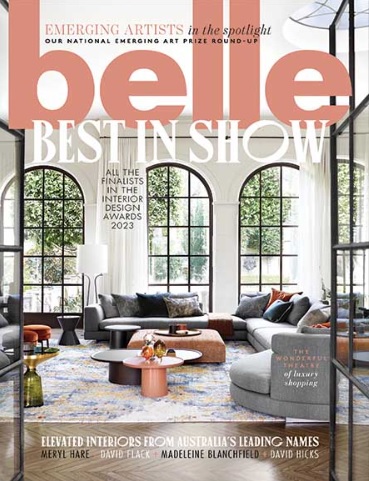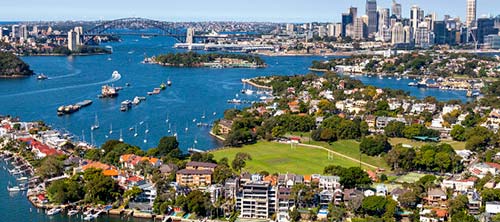Energy efficient and sustainable homes are becoming more popular here on the Balmain Peninsula. From savings on electricity bills to adding value to your home, there is plenty you can do to your home – and you don’t always have to spend a lot of money.
We’ve done the research for you and found five of the smartest and most sustainable upgrades to help you make your home more green.
Upgrade your ceiling Insulation
In many older homes, ceiling insulation may not have ever been installed, but it certainly has its benefits. Insulation in your ceiling helps keep your home warm in winter and cool in summer. Essentially it creates a barrier in the ceiling space (it can also be installed in the wall gap) stopping heat gain and loss. Beneficially, it may also reduce the chance of condensation, which in turn reduces the chance of mould and mildew growing in your home.
If you’re looking for a way to cut your electricity bill, this is one of the most popular options.
Install energy-efficient lighting
Changing the lighting in your home is one of the easiest yet most effective ways to reduce energy costs. LED lights use up to 90% less energy than regular bulbs, and can save you around $200 a year on your electricity bill.
Additionally, there are other ways you can save when it comes to natural lighting. In the warmer months, drawing your curtains or blinds can take some of the pressure off your air conditioner, and therefore your electricity bill.
If you are looking at building, renovating or extending, consider the design of your home and your window placement and how much heat will enter your home in the warmer months. An architect will help you here, as they use software that plots the exact position of your home and the optimal positions for windows for winter sun and summer shade.
Renovate with sustainable flooring
If you are in the middle of planning a renovation, consider replacing your current flooring with sustainable material. There are plenty of great options out there, including using reclaimed wood salvaged from older buildings. This is a great way to stop those materials from entering landfill, help save more trees from being cut down, and helps with air quality as they don’t need to be manufactured. Plus, they look great and add character.
Other great sustainable floor options include:
- Bamboo
- Cork
- Recycled Glass
Some homeowners are now also utilising carpet that has been made from recycled plastic bottled and tires to make a more eco-friendly home.
Install a low-flow toilet
We generally don’t consider how much water a toilet uses every time we flush, but older-style toilets can use as much as 11 litres of water for every flush – that’s a lot! Low-flow toilets (and dual flush toilets) are a more environmentally friendly option, using around 6 litres of water per flush. That’s quite a saving really, particularly when you have more than one person living in the house.
Talking toilets, it’s also important to check regularly that your toilets aren’t leaking. A leaking toilet can waste in excess of 300 litres a week. Between installing a low-flow toilet and making sure you have no leaks, you’ll save on both your water bill and water wastage.
Harvest rainwater
Installing a rainwater tank, even a small one, can go a long way towards saving water. Essentially, a rainwater tank allows you to collect the rainwater that runs off your roof and gutters, and instead of it going down the drains, it gets stored in a tank for you to use around the home. How you use collected water will really depend on whether it is potable or non-potable, but some great options for use include:
- Watering the garden
- Refilling toilets and washing machines
- Washing cars, outside of your home, pets
- Refilling fountains and ponds
All of these things can use a lot of drinkable water, so by harvesting rainwater, not only can you save on your water bills, but you can minimise your use of drinking water for non-drinking purposes. Thin tanks are great for those without a large amount of space and can hold from as little as 500 litres up to 4000 litres.
Green loans
Have you heard of green loans? These loans are a relatively new financial product that people are asking about when looking to renovate, buy or build a home, and they tend to encourage homeowners or buyers to look towards more sustainable options. Your home generally tends to need to meet a 7-Star NatHERS [Nationwide House Energy Rating Scheme] Energy Efficiency rating or a 7-Star Residential Efficiency Scorecard rating to be eligible for a green loan, but this can be achieved through simple measures such as solar panels, insulation, grey water systems, water tanks and double-glazed windows.
If you are considering building, buying or making eco-friendly home improvements, it is worth chatting to your lender about the suitability of green loans.
Can we help with your Inner West home?
Whether you’re ready to sell or need help to rent your investment property, we have the experience and local knowledge to make your property journey easier.
Looking for help selling your home or renting your investment property? Our team at Belle Property Balmain support homeowners across Balmain, Balmain East, Birchgrove, Rozelle and Lilyfield. Feel free to get in touch for a no-obligation discussion or property appraisal.




